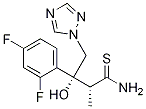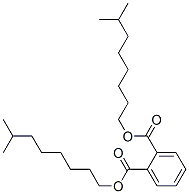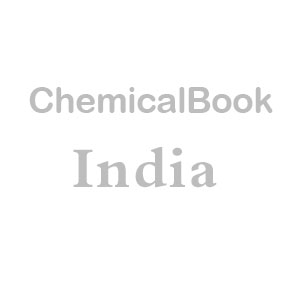1-Chloroethyl chloroformate
Synonym(s):ACE-Cl
- CAS NO.:50893-53-3
- Empirical Formula: C3H4Cl2O2
- Molecular Weight: 142.97
- MDL number: MFCD00000647
- EINECS: 256-834-2
- SAFETY DATA SHEET (SDS)
- Update Date: 2025-02-14 13:52:13

What is 1-Chloroethyl chloroformate?
Chemical properties
Clear and colorless liquid
The Uses of 1-Chloroethyl chloroformate
1-Chloroethyl chloroformate was used:
- for N-demethylation reaction during determination of multiple drugs of abuse in biological fluids using capillary electrophoresis with native fluorescence and laser-induced fluorescence detection
- as catalyst in chemoselective desilylation of silyl-protected alcohols
- as reagent in N-demethylation of tertiary amines to produce drug metabolite reference material for forensic toxicological applications
- as reagent to cleave benzhydryl groups from amines
The Uses of 1-Chloroethyl chloroformate
Reagent for the selective N-dealkylation of tertiary amines in high yields.
Properties of 1-Chloroethyl chloroformate
| Melting point: | -65°C |
| Boiling point: | 118-119 °C (lit.) |
| Density | 1.325 g/mL at 25 °C (lit.) |
| vapor pressure | 3.25 psi ( 20 °C) |
| refractive index | n |
| Flash point: | 105 °F |
| storage temp. | 2-8°C |
| solubility | Miscible with most organic solvents. |
| form | Liquid |
| color | Clear colorless |
| Sensitive | Moisture Sensitive |
| BRN | 1747601 |
| Stability: | Hygroscopic, Moisture Sensitive |
| CAS DataBase Reference | 50893-53-3(CAS DataBase Reference) |
| NIST Chemistry Reference | «ALPHA»-chloroethyl chloroformate(50893-53-3) |
Safety information for 1-Chloroethyl chloroformate
| Signal word | Danger |
| Pictogram(s) |
 Flame Flammables GHS02  Corrosion Corrosives GHS05  Exclamation Mark Irritant GHS07 |
| GHS Hazard Statements |
H226:Flammable liquids H302:Acute toxicity,oral H314:Skin corrosion/irritation |
| Precautionary Statement Codes |
P210:Keep away from heat/sparks/open flames/hot surfaces. — No smoking. P233:Keep container tightly closed. P280:Wear protective gloves/protective clothing/eye protection/face protection. P301+P312:IF SWALLOWED: call a POISON CENTER or doctor/physician IF you feel unwell. P303+P361+P353:IF ON SKIN (or hair): Remove/Take off Immediately all contaminated clothing. Rinse SKIN with water/shower. P305+P351+P338:IF IN EYES: Rinse cautiously with water for several minutes. Remove contact lenses, if present and easy to do. Continuerinsing. |
Computed Descriptors for 1-Chloroethyl chloroformate
| InChIKey | QOPVNWQGBQYBBP-UHFFFAOYSA-N |
1-Chloroethyl chloroformate manufacturer
JSK Chemicals
2Y
Phone:+91-9879767970
Whatsapp: +91-9879767970
product: 1-Chloroethyl chloroformate, 97% 99%
ASM Organics
Andhra Pradesh
Phone:91-9866122393
Whatsapp: 91-9866122393
product: 1-Chloroethyl chloroformate
New Products
3-(hexyloxy)-4-(pyridin-3-yl)-1,2,5-thiadiazole 3-Pyridineacetonitrile, α-hydroxy- 2-Propanamine, 1-chloro-, hydrochloride (9CI) 3-Iodophenylacetic acid Cyclohexane, (2-propynyloxy)- (S)-1-Boc-3-methanesulfonyloxy-pyrrolidine Pivalic anhydride,98% Phenylmethanesulfonyl fluoride, 98% Glyoxylic acid solution, 50% in water tert-Butyl glycinate,97% 4-Ethoxybenzoic acid, 99% Sodium 1-octanesulfonate monohydrate 7-Ethyl Tryptophol 2-AMINO-3,5-DIBROMO BENZALDEHYDE [ADBA] L-Glutamic Acid Dimethyl Ester Hcl N, N-Carbonyldiimidazole (CDI) 5-Cyanophthalide 10-Methoxy-5H-dibenz[b,f]azepine 3-Methoxybenzonitrile Dibenzoyl Peroxide 4-Methoxybenzonitrile Titanium Dioxide Chloral PentachlorobenzonitrileRelated products of tetrahydrofuran








You may like
-
 50893-53-3 1-chloroethyl chloroformate 95%View Details
50893-53-3 1-chloroethyl chloroformate 95%View Details
50893-53-3 -
 50893-53-3 98%View Details
50893-53-3 98%View Details
50893-53-3 -
 1-Chloroethyl chloroformate CAS 50893-53-3View Details
1-Chloroethyl chloroformate CAS 50893-53-3View Details
50893-53-3 -
 1-Chloroethyl chloroformate 50893-53-3 98%View Details
1-Chloroethyl chloroformate 50893-53-3 98%View Details
50893-53-3 -
 1-Chloroethyl chloroformate, 97% 99%View Details
1-Chloroethyl chloroformate, 97% 99%View Details
50893-53-3 -
 50893-53-3 1-Chloroethyl chloroformate 98%View Details
50893-53-3 1-Chloroethyl chloroformate 98%View Details
50893-53-3 -
 1-Chloroethyl Chloroformate CAS 50893-53-3View Details
1-Chloroethyl Chloroformate CAS 50893-53-3View Details
50893-53-3 -
 1-Chloroethyl chloroformate CAS 50893-53-3View Details
1-Chloroethyl chloroformate CAS 50893-53-3View Details
50893-53-3
Statement: All products displayed on this website are only used for non medical purposes such as industrial applications or scientific research, and cannot be used for clinical diagnosis or treatment of humans or animals. They are not medicinal or edible.
